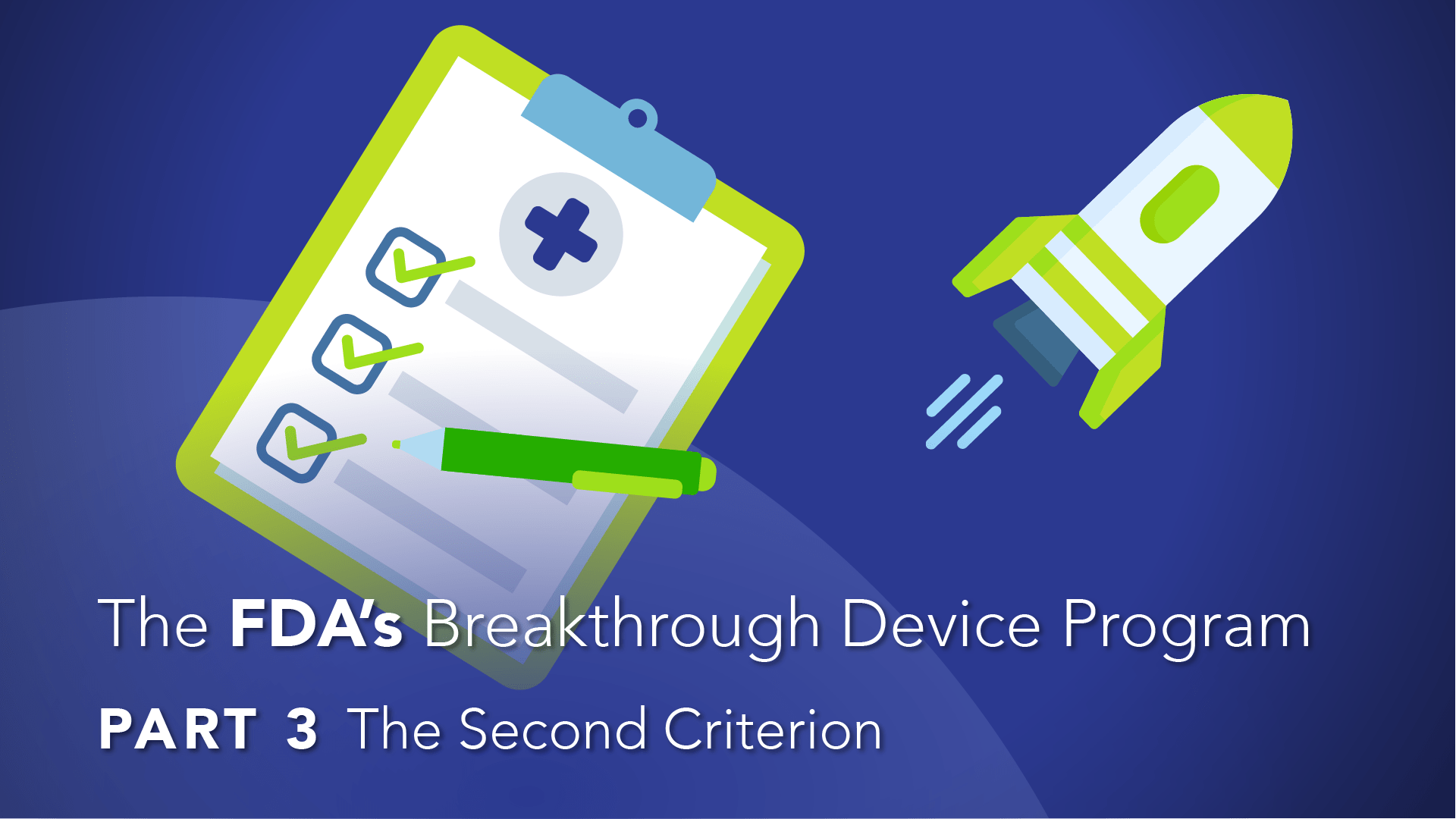
In our last post, we discussed the first criterion of the FDA’s Breakthrough Device Program and the final guidance defining the program. You can catch up on previous posts in this series here if you missed it:
- The Breakthrough Device Program: Part 1
- The Breakthrough Device Program: Part 2 - The First Criterion
In this post, we are going to drill down into the second criterion and what it means. The criterion we are referencing is from the US FDA’s final guidance for the Breakthrough Device Program .
The Second Criterion
- Represent breakthrough technologies;
- No approved or cleared alternative exist;
- Offer significant advantages over existing approved or cleared alternative, including the potential, compared to existing approved alternative, to reduce or eliminate the need to hospitalization, improve patient quality of life, facilitate patients’ ability to manage their own care (such as through self-directed personal assistance), or establish long-term clinical efficiencies; or
- Availability of which is in the best interest of patients.
At least one of these sub-paragraphs needs to be met in order to qualify for Breakthrough Device designation.
Now, let’s look at each one of these sub-paragraphs in greater detail.
Device represents breakthrough technology
Is the device a novel technology or a novel application of an existing technology that has the potential to lead to a clinical improvement in the diagnosis, treatment, cure, mitigation, or prevention of the life-threatening or irreversibly debilitating disease or condition? An example of this is a device that can temporarily control bleeding of a non-compressible wound until the patient is able to get surgical care.
No approved or cleared alternative exist
Is there a drug, biologic, device, or combination product that has received FDA marketing authorization after premarket review for the same indication(s) being considered? Additionally, the device needs to be consistent with the U.S. standard of care. Therefore, the FDA will determine if there is a device currently approved or cleared with varying relevance and the device is no longer used or rarely used. An example of this is a testing device to aid diagnosis of Parkinson’s Disease. There are devices to monitor tremors associated with Parkinson’s Disease, but no device intended to aid in the diagnosis of Parkinson’s Disease.
Device offers significant advantages over existing approved or cleared alternatives
FDA considers the potential, compared to existing approved or cleared alternatives, to reduce or eliminate the need for hospitalization, improve patient quality of life, facilitate patient’s ability to manage their own care, or establish long-term clinical efficiencies. An example of this would be a device intended to improve or prevent serious treatment-related side effects associated with an available device.
Device availability is in the best interest of patients
FDA considers whether the proposed device and indication(s) for use provide another type of specific public health benefit. This may apply in the following situations:
- When the device has a benefit for patients who are unable to tolerate available therapy, whose disease has failed to respond to available therapy, or for whom the treatment can be used effectively with other critical agents that cannot be combined with available therapy.
- When a device that was designed or modified to address an unanticipated serious failure occurring in a critical component of an approved or cleared device for which there are no alternatives or for which alternative treatment would entail substantial risk of morbidity for the patient.
- When the device provides an additional benefit, such as improved patient compliance that is expected to lead to a reduction in serious adverse outcomes.
- When the device addresses an emerging or anticipated public health need, such as a device shortage or public health emergency.
FDA may consider relevant patient perspective information. This may include information on the relative value of the perceived benefits and risks of a specific device to treat or diagnose a life threatening or irreversibly debilitating disease or condition.
If you need any assistance with your determining if your device is eligible for Breakthrough Device designation, contact TAMM Net. We are ready and able to help with any of your regulatory needs!